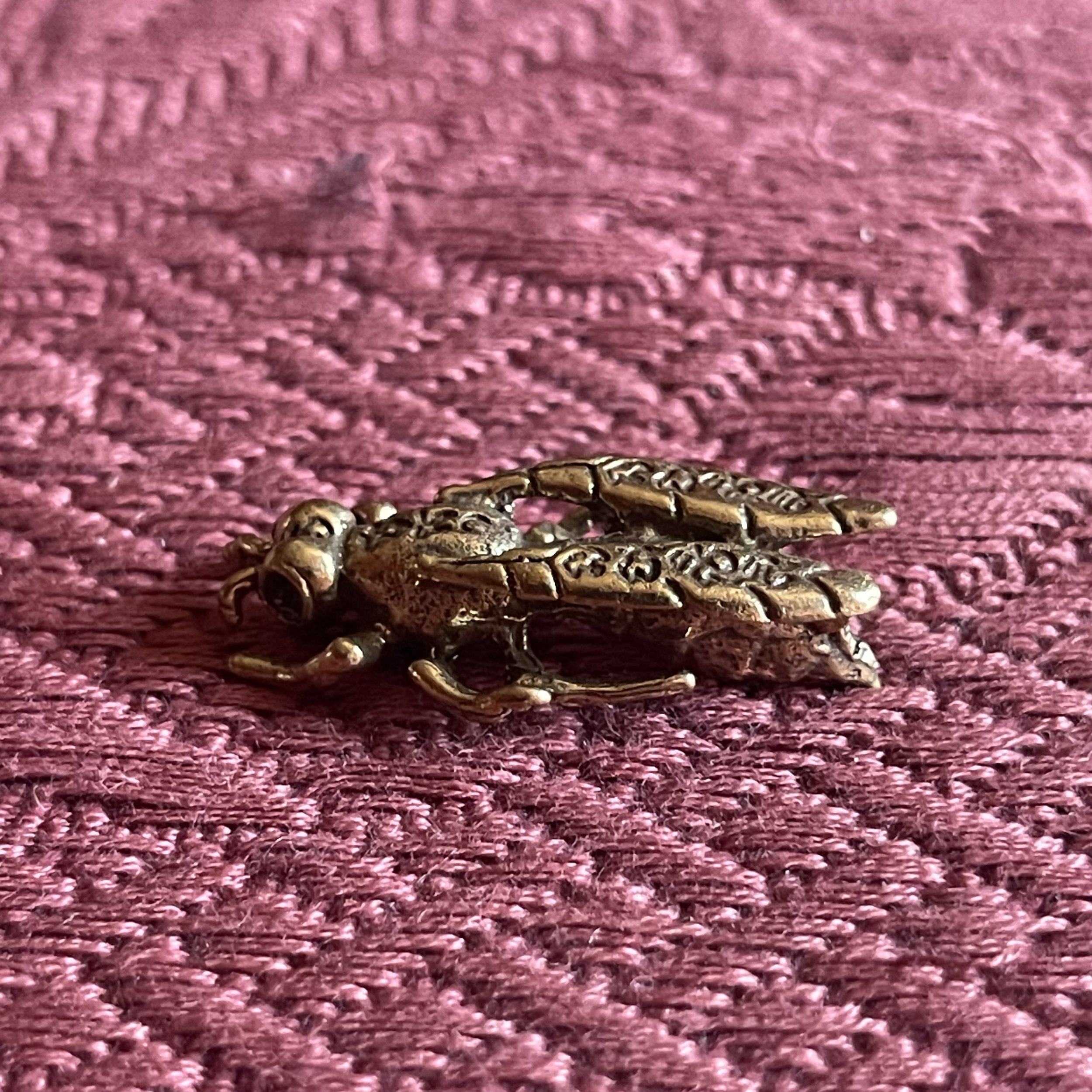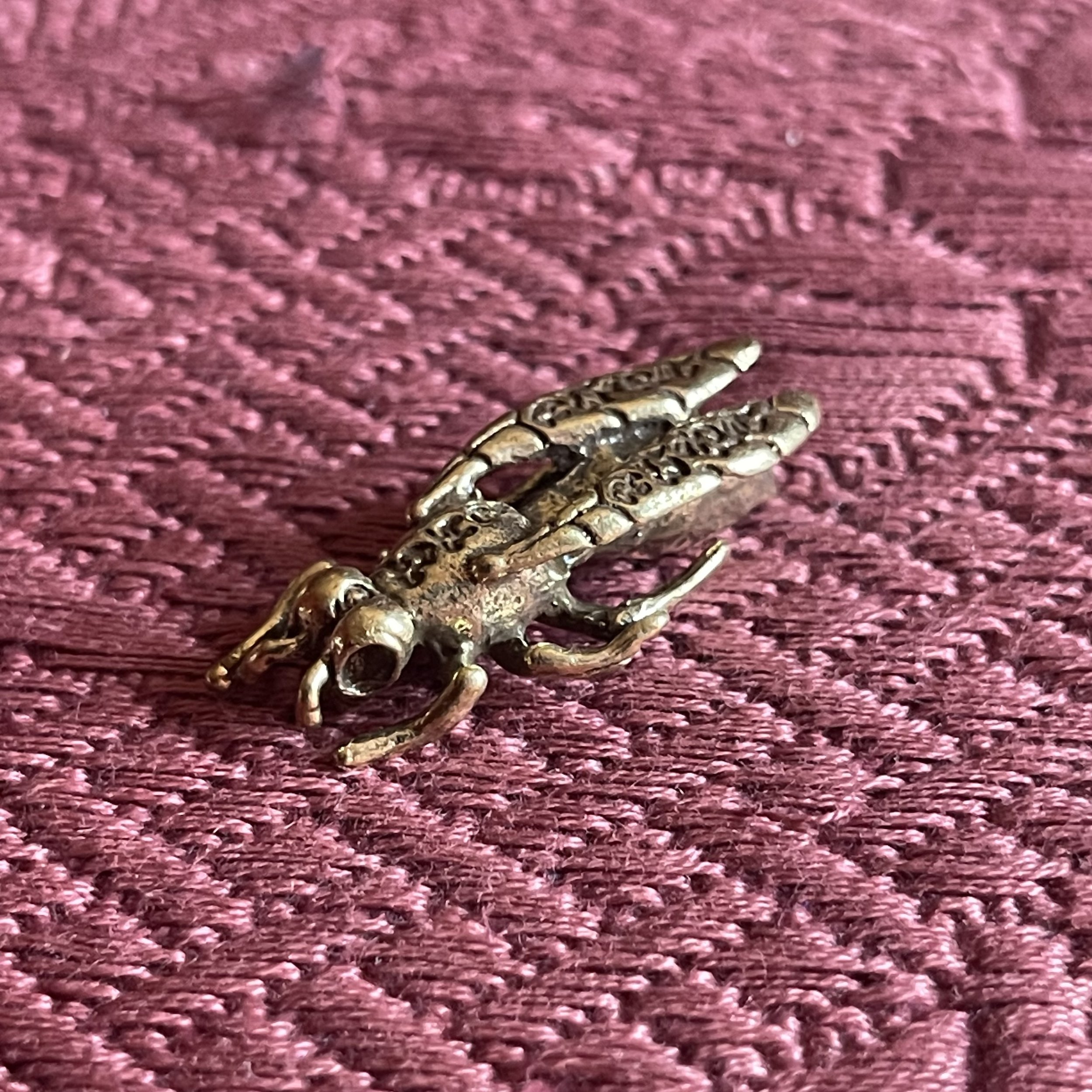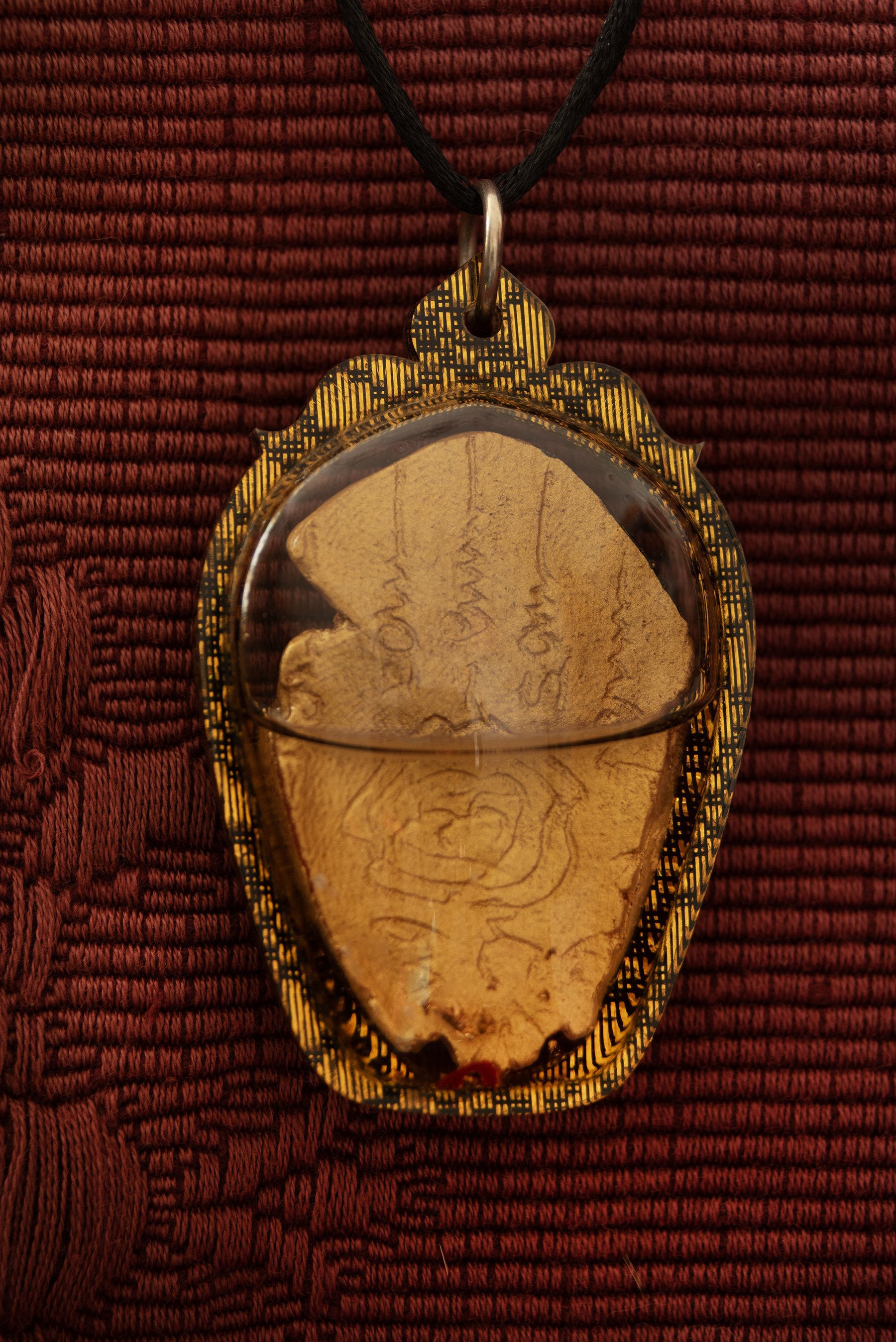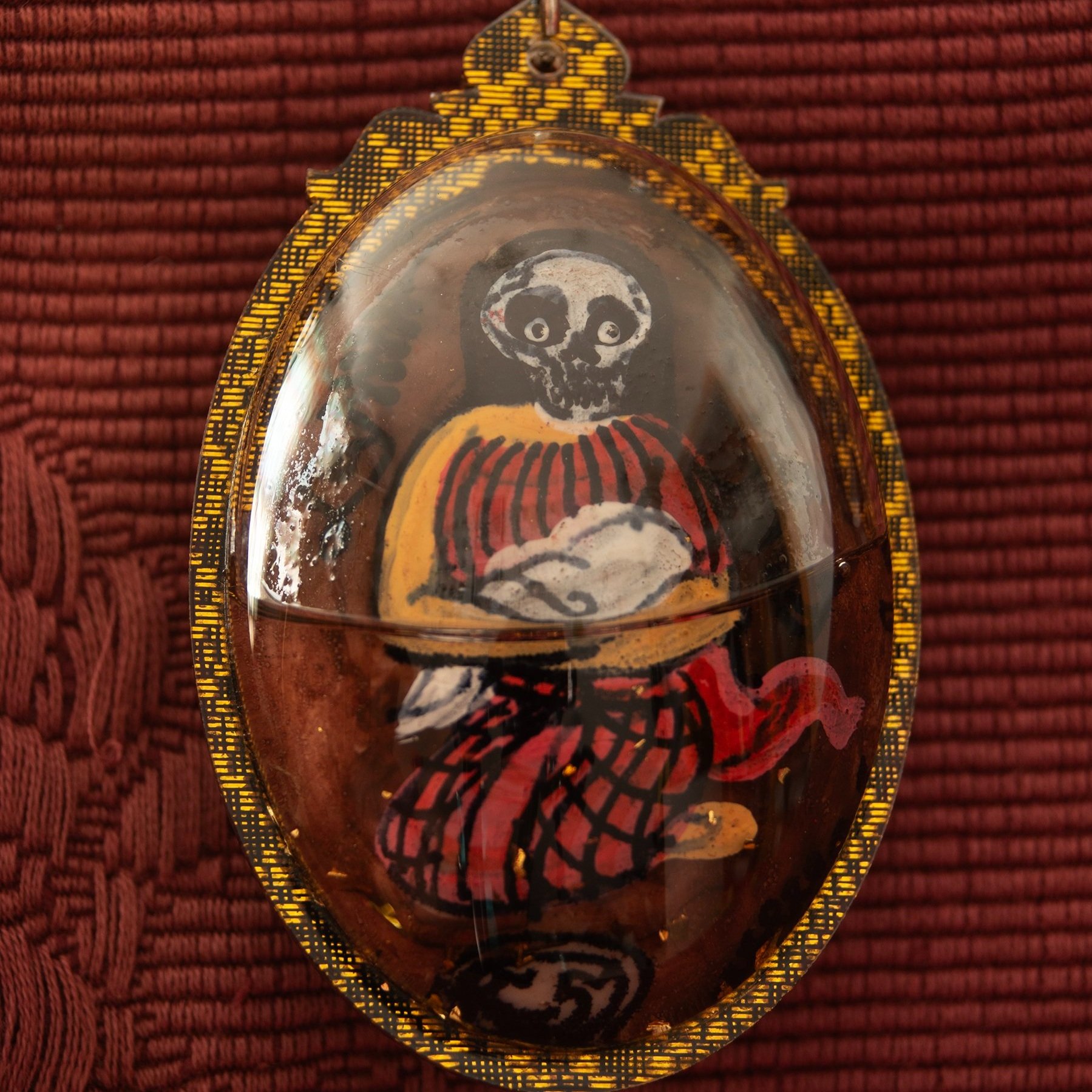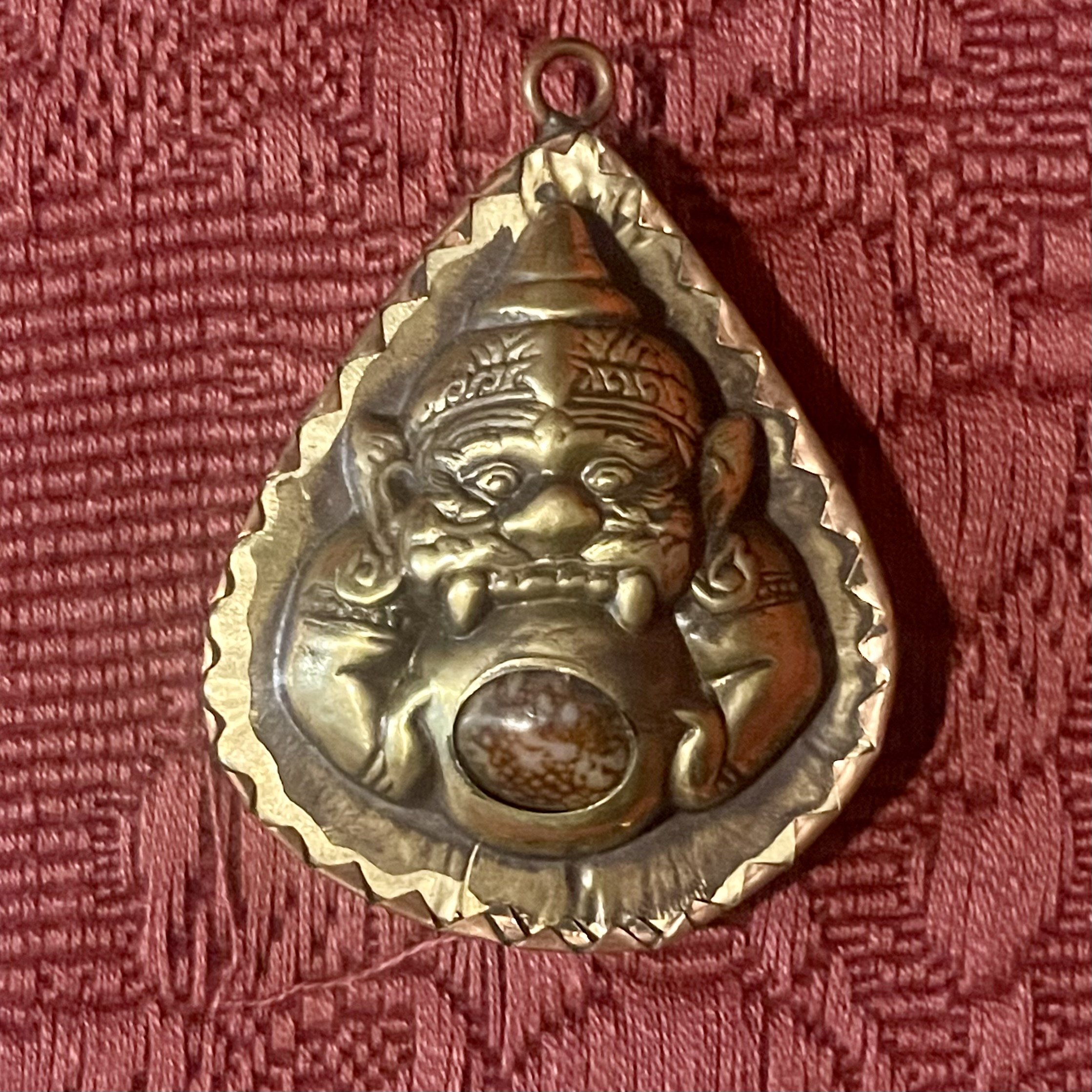 Image 1 of 4
Image 1 of 4

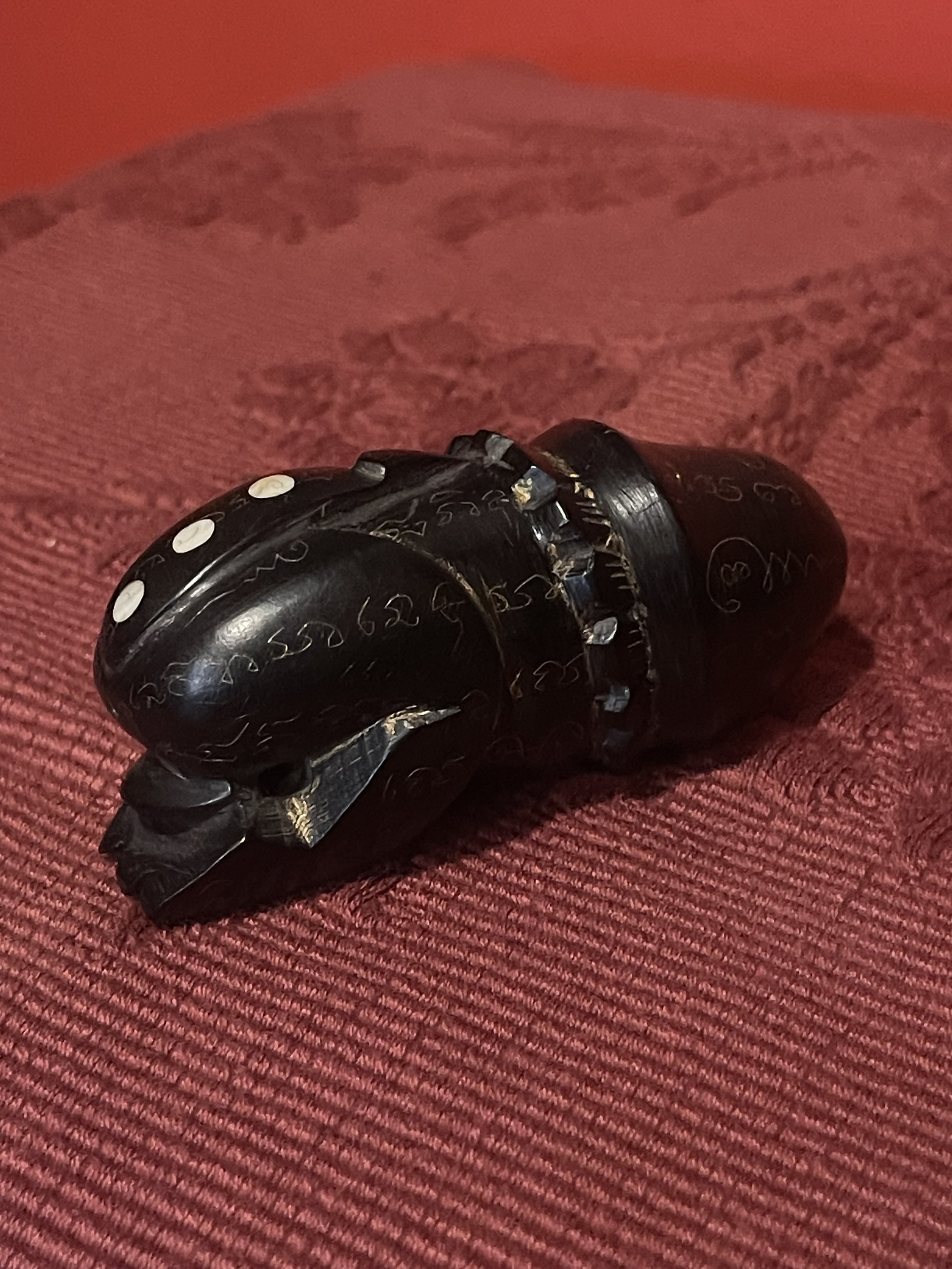 Image 2 of 4
Image 2 of 4

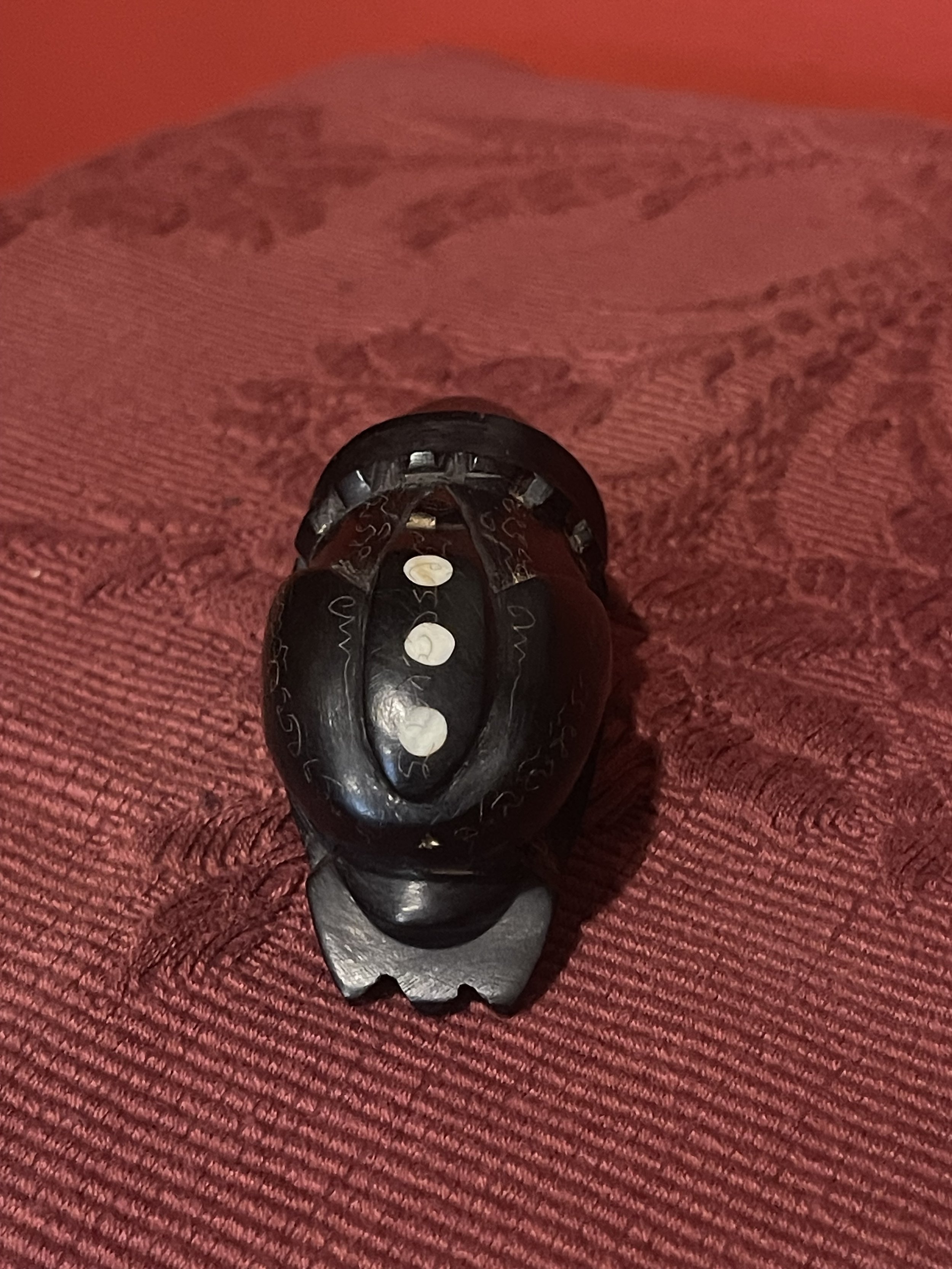 Image 3 of 4
Image 3 of 4

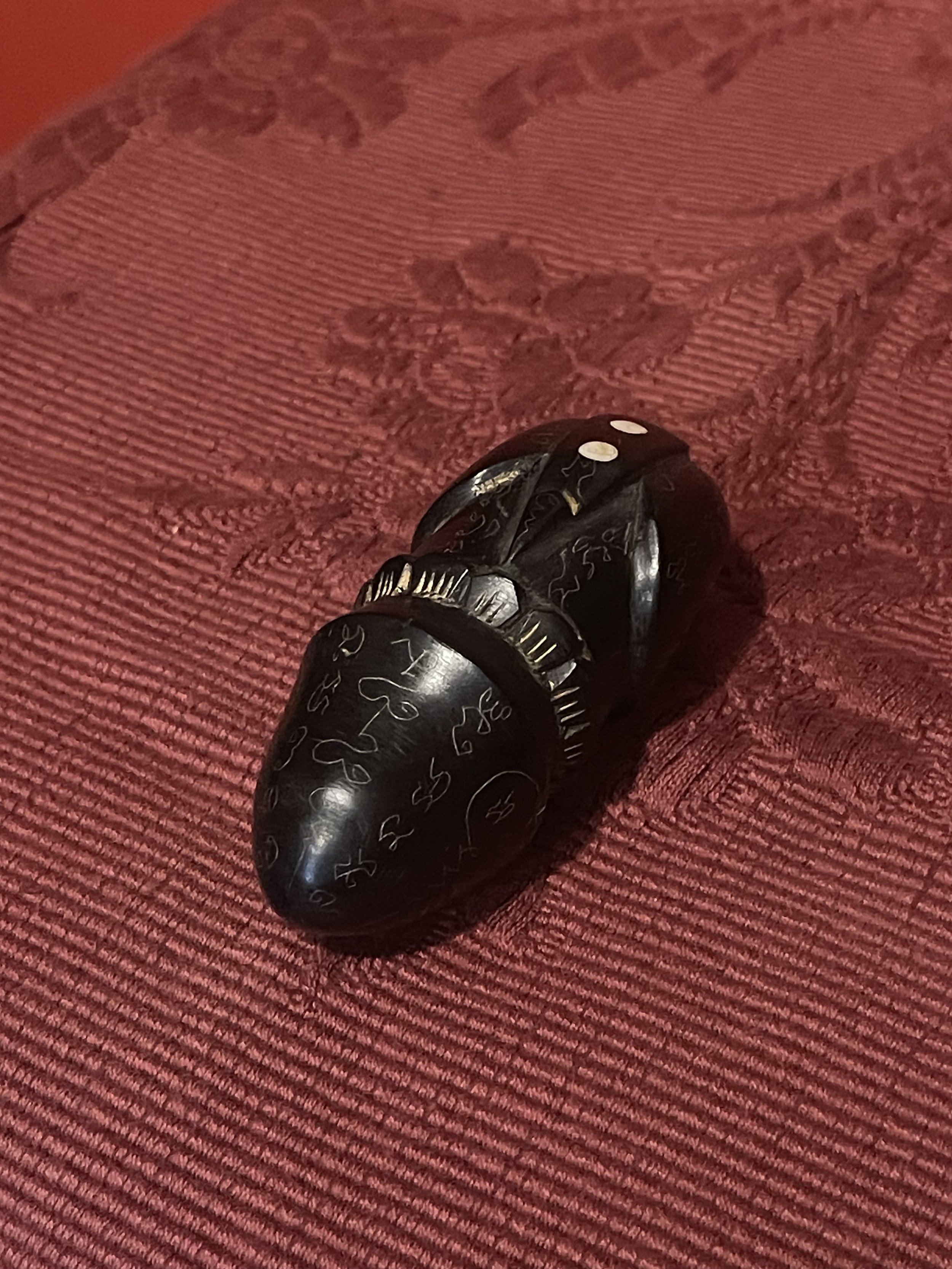 Image 4 of 4
Image 4 of 4





Bowing Palad Khik: Phallic Amulet in Ebony and Shell Inlay
The use of Palad Khik originated in India in relation to the Hindu god Shiva, who is sometimes represented as lingam, an abstract representation of male genitalia. The Palad Khik is a phallic representation used to conjure, attract or retain sacred intervention. It is used for purposes such as fertility, good luck, protection, good business, and sometimes for sexual attraction and charisma. It is not uncommon in Thailand to see a penis amulet hanging at a convenience store or a restaurant, and they are routinely sold by amulet merchants in the streets. If to our western eyes they can be seen as curious, comical or scandalous, these amulets beautifully convey the relativity of taboos and body perceptions from one culture to another.
These exceptionally large, hand-carved amulets depict a phallus with legs in a bowing posture, symbolizing a gesture of respect. The body of each amulet is intricately inscribed with sacred yants, serving as a form of blessing. The reverse side features a spine inlaid with three white shell elements, adding to their unique charm.
They measure a mighty 3.5x1 inches and come complete with a black cord necklace, ready to wear.
The use of Palad Khik originated in India in relation to the Hindu god Shiva, who is sometimes represented as lingam, an abstract representation of male genitalia. The Palad Khik is a phallic representation used to conjure, attract or retain sacred intervention. It is used for purposes such as fertility, good luck, protection, good business, and sometimes for sexual attraction and charisma. It is not uncommon in Thailand to see a penis amulet hanging at a convenience store or a restaurant, and they are routinely sold by amulet merchants in the streets. If to our western eyes they can be seen as curious, comical or scandalous, these amulets beautifully convey the relativity of taboos and body perceptions from one culture to another.
These exceptionally large, hand-carved amulets depict a phallus with legs in a bowing posture, symbolizing a gesture of respect. The body of each amulet is intricately inscribed with sacred yants, serving as a form of blessing. The reverse side features a spine inlaid with three white shell elements, adding to their unique charm.
They measure a mighty 3.5x1 inches and come complete with a black cord necklace, ready to wear.


